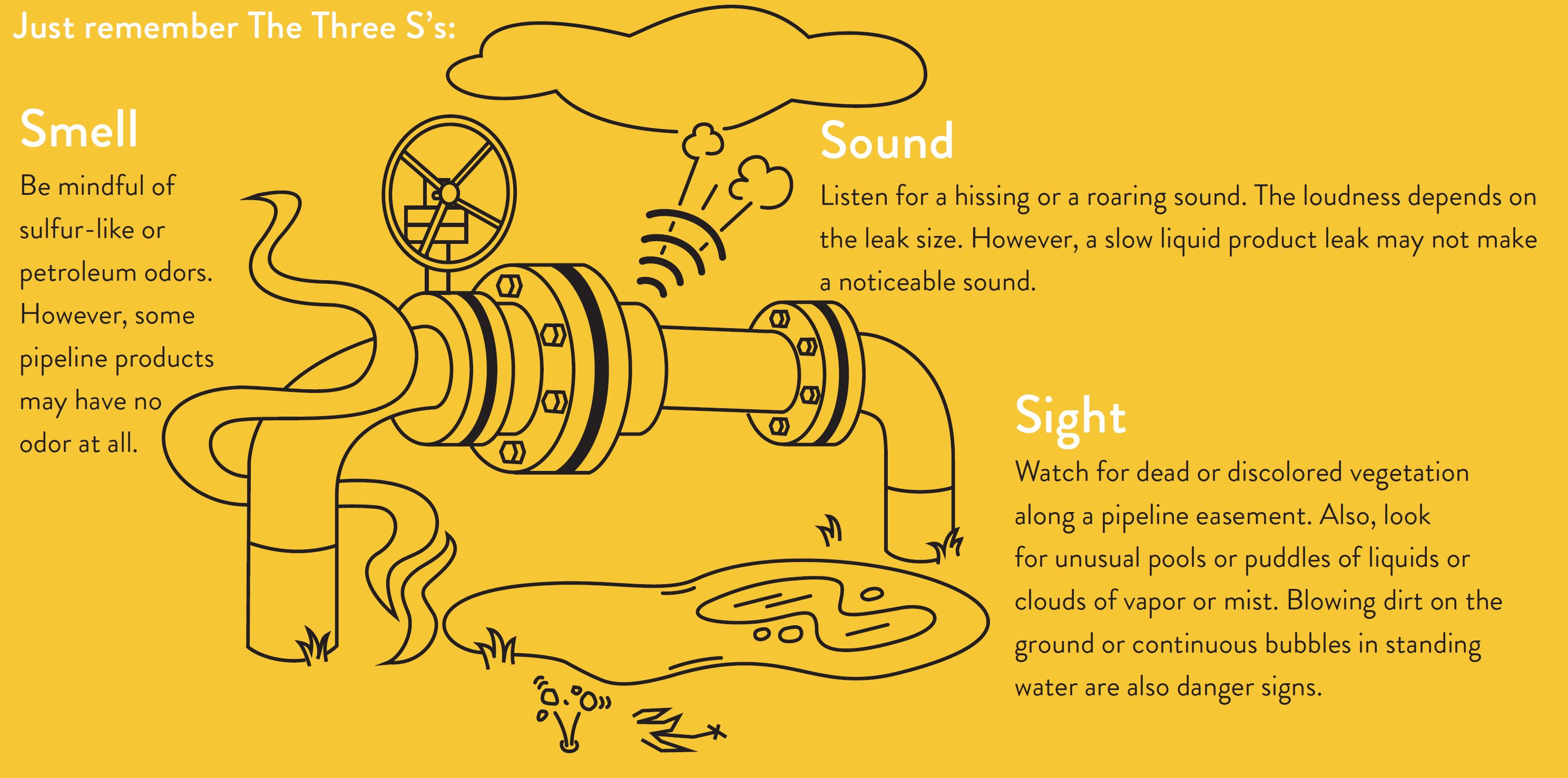Although pipeline incidents are rare, when they happen it can create an emergency that few are prepared for. When near a pipeline, you can help quickly recognize a potential leak or unintended release of product. Just remember The Three S’s:
Smell
Be mindful of sulfur-like or petroleum odors. However, some pipeline products may have no odor at all.
Sight
Watch for dead or discolored vegetation along a pipeline easement. Also, look for unusual pools or puddles of liquids or clouds of vapor or mist. Blowing dirt on the ground or continuous bubbles in standing water are also danger signs.
Sound
Listen for a hissing or a roaring sound. The loudness depends on the leak size. However, a slow liquid product leak may not make a noticeable sound.
All school-pipeline emergencies are situational and may necessitate the implementation of shelter-in-place protocols or evacuation by foot or vehicle from the site.
A pipeline emergency will likely require a significant response by local authorities and pipeline companies. School Officials should work in a collaborative effort with those authorities to determine incident specific directives.
DO:
- Take immediate action to ensure you are in a safe location, including being uphill and upwind of the leak if possible
- Unless following sheltering-in-place protocol, leave all equipment and machinery “as is”
- From a safe location, call 911 and then the pipeline operators emergency number
- Secure the area and warn others
DON’T:
- Drive/walk into a vapor cloud or towards the pipeline
- Introduce an ignition source such as a match/lighter, vehicle engine or anything that could create heat or a spark
- Use a telephone until in a safe location
- Come in physical contact with any escaping material

